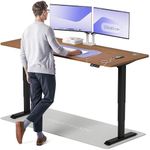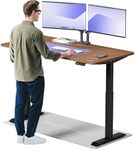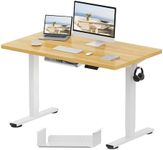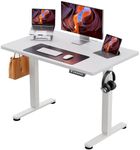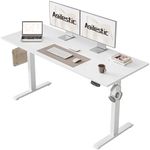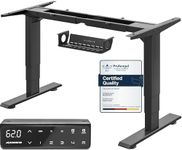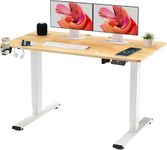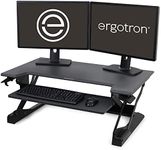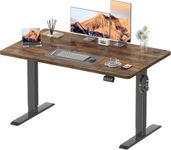Buying Guide for the Best Standing Desks
Choosing the right standing desk can significantly impact your comfort and productivity, especially if you spend long hours working at a desk. Standing desks are designed to allow you to alternate between sitting and standing positions, promoting better posture and reducing the risks associated with prolonged sitting. When selecting a standing desk, consider your workspace size, ergonomic needs, and how often you plan to switch between sitting and standing. It's important to find a desk that fits your lifestyle and work habits.Height AdjustabilityHeight adjustability is crucial for a standing desk as it allows you to switch between sitting and standing positions comfortably. This feature is important because it helps maintain ergonomic posture, reducing strain on your back and neck. Standing desks typically offer manual or electric height adjustment. Manual adjustments are often more affordable but require more effort, while electric adjustments are convenient and smooth. Consider how often you'll change positions; frequent adjustments might benefit from an electric model.
Desktop SizeThe size of the desktop is important because it determines how much space you have for your work essentials like monitors, keyboards, and other office supplies. A larger desktop provides more room for multitasking and organizing your workspace, while a smaller one is suitable for minimal setups or compact spaces. Think about your work habits and the equipment you use daily. If you use multiple monitors or need space for paperwork, opt for a larger desktop. For smaller spaces or minimal setups, a compact desk might be more appropriate.
Weight CapacityWeight capacity refers to the maximum weight the desk can support without compromising stability. This is important if you have heavy equipment like multiple monitors, desktop computers, or other office gadgets. Desks with higher weight capacity are generally sturdier and more durable. Consider the weight of your equipment and choose a desk that can comfortably support it. If you plan to add more devices in the future, opt for a desk with a higher weight capacity to accommodate potential changes.
Ease of AssemblyEase of assembly is an important factor, especially if you're not particularly handy or don't have much time to spend on setup. Some standing desks come pre-assembled or require minimal assembly, while others might need more time and effort to put together. Consider your comfort level with assembling furniture and the time you can dedicate to it. If you prefer a hassle-free setup, look for desks that are easy to assemble or come with clear instructions and necessary tools.
StabilityStability is crucial for a standing desk to ensure it remains steady and secure, especially when adjusting heights or working with heavy equipment. A stable desk prevents wobbling and ensures a safe working environment. Stability can be influenced by the desk's construction, materials, and design. If you plan to use heavy equipment or frequently adjust the desk's height, prioritize models known for their stability. Test the desk if possible, or read reviews to ensure it meets your stability needs.

